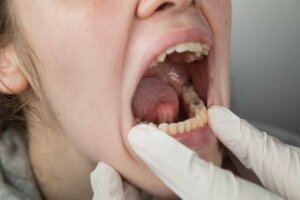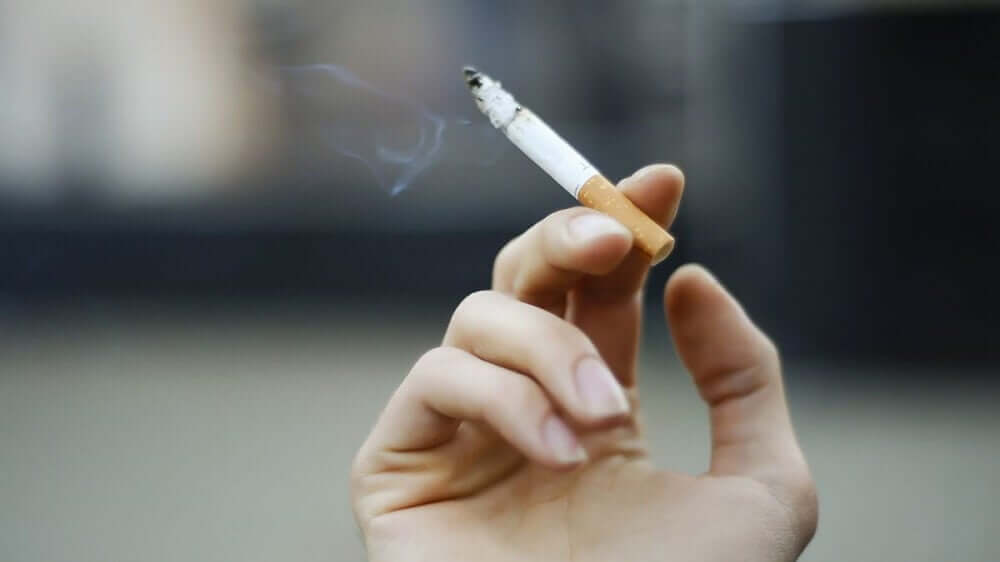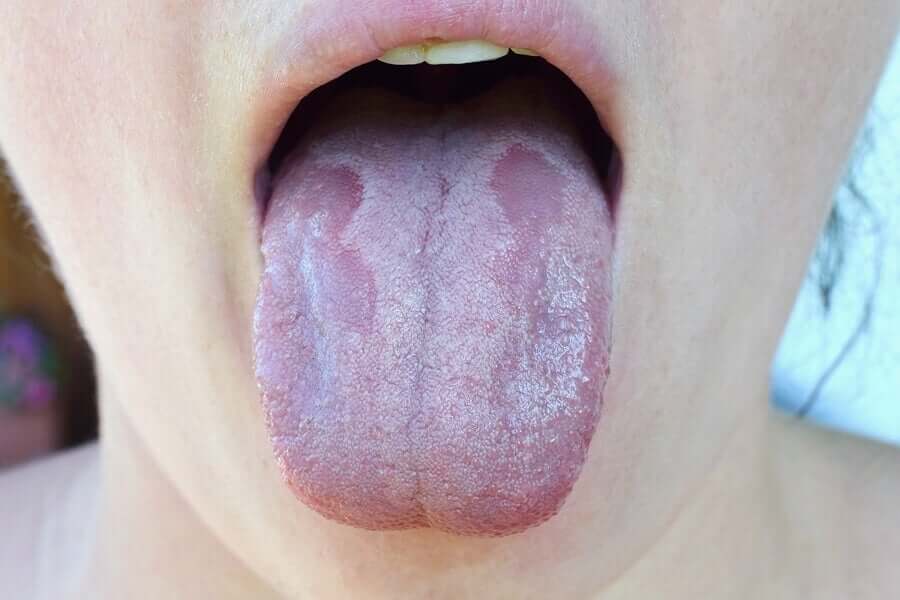Risk Factors for Mouth Cancer

Doctors have determined certain risk factors for mouth cancer. Mouth cancer is a disease caused by an abnormal proliferation of cells in any of the tissues of the mouth. In turn, it’s one of the cancers in the category called “head and neck cancers”. Do you know the risk factors for oral cancer?
Although the mouth is an accessible area that we can observe with a mirror, doctors don’t usually diagnose most patients with this type of cancer until its late stages, which makes treatment and prognosis much more difficult.
For this reason, it’s important to know your risk factors and to take action on those that can be modified. Discover them here!
Risk factors for mouth cancer
Mouth cancer isn’t as known or talked about as other cancers. Within the oral cavity, the most common areas where it can occur are the following:
- Gum
- Palate
- Tongue
- Lower lip
- Bottom of the tongue
- Salivary glands
According to a publication in the Journal of Oral and Maxillofacial Surgery, mouth cancer is a multifactorial disease. That is, there are several factors that increase the risk of developing it. These are detailed below.
1. Tobacco
When a person smokes, all the chemicals found in tobacco smoke come into contact with their mouth. These chemicals, such as cadmium, arsenic or methanol, are carcinogenic and can cause alterations in the tissues they come into contact with and produce lesions.
In addition, the heat caused by the combustion of tobacco accelerates these morphological changes. The risk of cancer from smoking increases as the dose of tobacco and the time spent smoking increases. It’s also more dangerous if the person is smoking low-quality tobacco.

2. Alcohol
Along with tobacco, this is one of the most determining risk factors. If you combine both factors then your risk increases exponentially, you’re 38 times more likely to suffer from it.
Alcohol is an irritant of the mucous membranes, it also produces the degradation of ethanol into acetaldehyde. Acetaldehyde has been shown to have a clear relationship with mouth cancer, as seen in a study published in the journal Cancers.
Poor hygiene increases the degradation of this compound and increases the risk of oral cancer in people who regularly consume alcohol.
You may like to read: 5 Teas that Can Reduce Your Craving to Smoke
3. Diet
Dietary deficiencies increase the risk of mouth cancer. Especially if the person lacks vitamins and minerals. A lack of iron can lead to mucosal atrophy and vitamin E deficiency decreases control of free radicals, which can convert healthy cells into tumor cells.
Eating fruit and vegetables decreases the risk of mouth cancer. The so-called Mediterranean diet, based on eating fruits, vegetables, olive oil, cereals and fish, with low amounts of meat and dairy products, can help to prevent oral cancer.
4. Environmental factors
One of the most important environmental factors, and the one most closely related to cancer, is solar radiation. The area they affect in greater measure is the inferior lip, producing some spots of brown color called keratosis.
Among environmental factors, we can also mention heavy metals, such as chromium or nickel, which can be found in water filtered in soil with these metals.
5. Bacterial infections
Bacteria naturally produce tissue inflammation. This inflammation implies an alteration in the natural cycle of the cells. During this alteration of the cycle, some type of mutation may occur that implies the development of the tumor.
In addition, the substances discarded by the bacteria are also toxic to the body. In the biopsy of tumors, remains of bacteria related to candidiasis, pneumonia or different types of fungi are found to a great extent.
Poor hygiene, as always, also plays a role, as there’s a link between the number of missing teeth and mouth cancer.

6. Viral infections
Researchers have discovered that viruses cause 10 to 15% of cancer by producing damage to cellular DNA during replication. The virus with which this relationship has been most evident is the Human Papilloma Virus (HPV) and herpes simplex viruses.
Lesions that were previously in the oral mucosa, called pre-malignant lesions produce the highest percentage of mouth cancers. You should always monitor and control these lesions and, if after 15 days of evolution, you don’t see any improvement, you should always ask a doctor to rule out possible malignant lesions.
Learn more: Mouth Ulcers or Sores: Everything You Need to Know
7. Genetic factors
In addition to the risk factors mentioned, genetics is very important. A genetic mutation can lead to a tumor, and these genetics can be altered by environmental factors, such as diet, sun exposure, tobacco, alcohol, etc.
How to prevent mouth cancer
The prevention of mouth cancer is fundamental. Dentists, in their annual check-ups, apart from checking for cavities, periodontal disease and other diseases of the mouth, also perform a general control to rule out possible pre-malignant lesions.
The control at home of wounds or coloring is also important. In addition, if we also know the risk factors of oral cancer, then we can be more careful and control them as necessary.
All cited sources were thoroughly reviewed by our team to ensure their quality, reliability, currency, and validity. The bibliography of this article was considered reliable and of academic or scientific accuracy.
- Ram H, Sarkar J, Kumar H, Konwar R, Bhatt ML, Mohammad S. Oral cancer: risk factors and molecular pathogenesis. J Maxillofac Oral Surg. 2011;10(2):132–137. doi:10.1007/s12663-011-0195-z
- Bunnell A, Pettit N, Reddout N, et al. Analysis of primary risk factors for oral cancer from select US states with increasing rates. Tob Induc Dis. 2010;8(1):5. Published 2010 Feb 23. doi:10.1186/1617-9625-8-5
- Azhar N, Sohail M, Ahmad F, et al. Risk factors of Oral cancer- A hospital based case control study. J Clin Exp Dent. 2018;10(4):e396–e401. Published 2018 Apr 1. doi:10.4317/jced.54618
- Stornetta A, Guidolin V, Balbo S. Alcohol-Derived Acetaldehyde Exposure in the Oral Cavity [published correction appears in Cancers (Basel). 2018 Mar 16;10 (3):]. Cancers (Basel). 2018;10(1):20. Published 2018 Jan 14. doi:10.3390/cancers10010020
- Speicher DJ, Ramirez-Amador V, Dittmer DP, Webster-Cyriaque J, Goodman MT, Moscicki AB. Viral infections associated with oral cancers and diseases in the context of HIV: a workshop report. Oral Dis. 2016;22 Suppl 1(Suppl 1):181–192. doi:10.1111/odi.12418
This text is provided for informational purposes only and does not replace consultation with a professional. If in doubt, consult your specialist.








